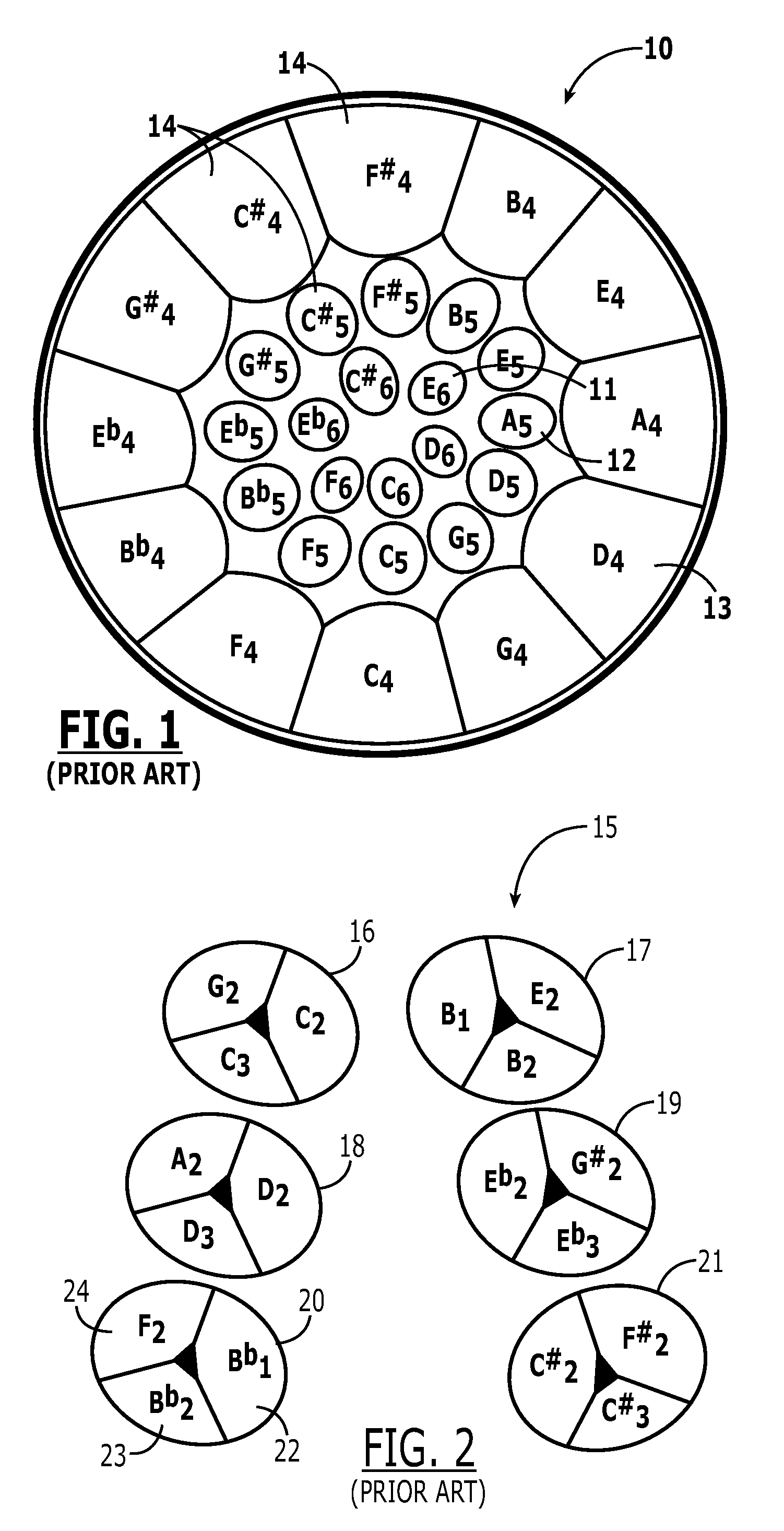Steel Pan Tablature System and Associated Methods
a technology of tablature and steel pan, applied in the field of music notational systems, can solve the problems of not yet having a means of writing down, not being able to recall what was learned, and taking a long time to master a piece, etc., and achieve the effect of easy application and understanding for pan players
- Summary
- Abstract
- Description
- Claims
- Application Information
AI Technical Summary
Benefits of technology
Problems solved by technology
Method used
Image
Examples
embodiment 30
[0044]In the embodiment 30 of FIG. 3A, a G-clef staff system 32 such as known in the art of musical notation is positioned atop a pan staff 33 of the present invention. The G-clef staff system 32 is populated by the series of notes 34 to be played. The pan staff 33 comprises, prior to a first measure of music 35, and beneath the key 36 and time 37 signatures of the G-clef staff system 32, a letter representation (“key name”) 38 of the key signature and the time signature 39. Measure lines 40,41 as known in the art are present in both staff systems 32,33.
[0045]The pan staff 33 has three horizontal lines 42-44 positioned atop, and in spaced relation from, each other. A first (bottom) line 42 represents the center ring 11 of note pads 14; a second (middle) line 43 positioned above the first line 42 represents the inner ring 12 of note pads 14; and a third (top) line 44 positioned above the second line 43 represents the outer ring 13 of note pads 14.
[0046]In this example, for each note ...
embodiment 231
[0052]In an alternate embodiment 231 of the invention, usable for a bass pan set 15 such as illustrated in FIG. 2, the staff lines 242-244 represent notes in pitch order. The first (top) line 242 represents a sequence of six notes from Bb2 through Eb3; the second (middle) staff line 243 represents a sequence of six notes from E2 through A2; and the third (bottom) line 244 represents a sequence of six notes from Bb1 through Eb2.
[0053]It will be understood by one of skill in the art that any configuration of one or more pans can be accommodated with the notation of the present invention, simply by defining a set of notes to be represented on each staff line and creating scores based upon that definition, and that the invention is not intended to be limited to these particular exemplary embodiments.
[0054]An orchestral score format 100 (FIG. 4) can also be contemplated, wherein a plurality of stacked pan staffs 33 are provided, one for each of the types of pans or pan systems. Again, a ...
PUM
 Login to View More
Login to View More Abstract
Description
Claims
Application Information
 Login to View More
Login to View More - R&D
- Intellectual Property
- Life Sciences
- Materials
- Tech Scout
- Unparalleled Data Quality
- Higher Quality Content
- 60% Fewer Hallucinations
Browse by: Latest US Patents, China's latest patents, Technical Efficacy Thesaurus, Application Domain, Technology Topic, Popular Technical Reports.
© 2025 PatSnap. All rights reserved.Legal|Privacy policy|Modern Slavery Act Transparency Statement|Sitemap|About US| Contact US: help@patsnap.com



